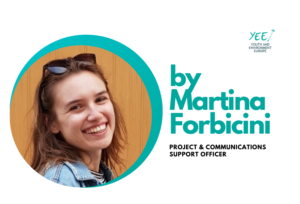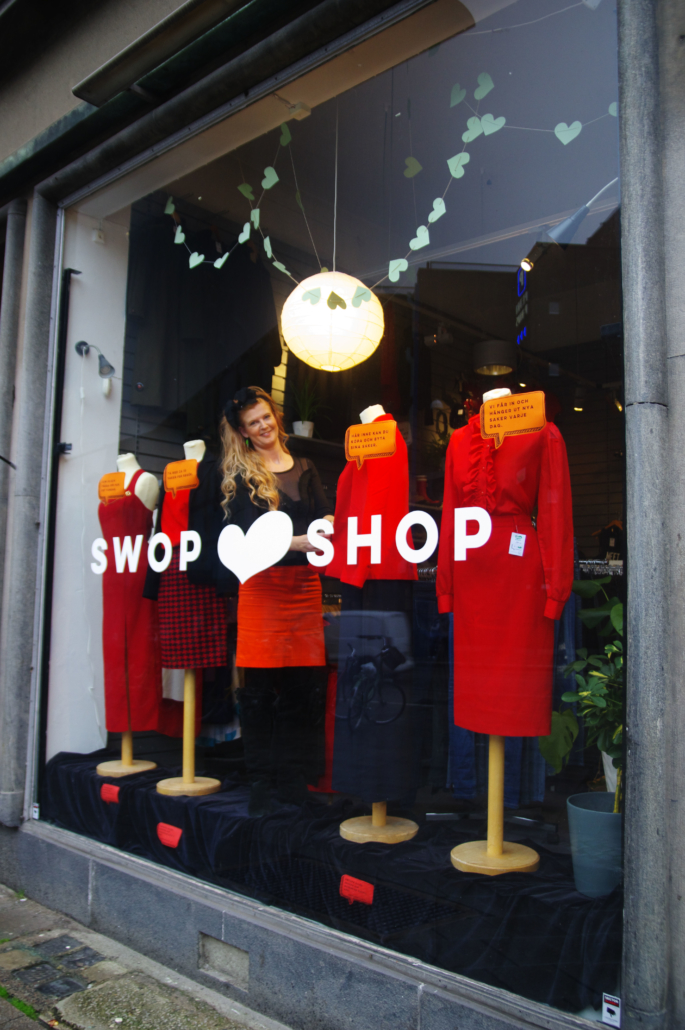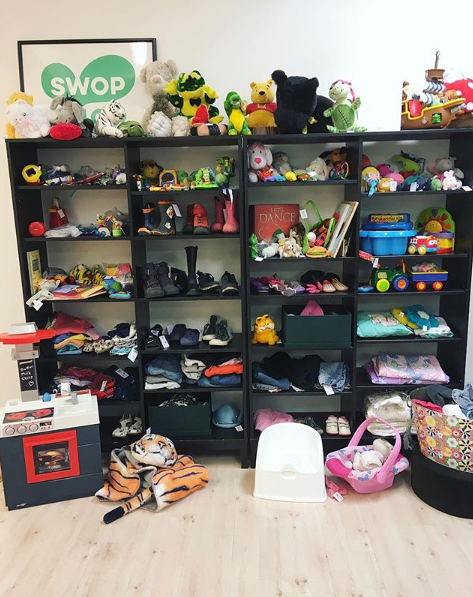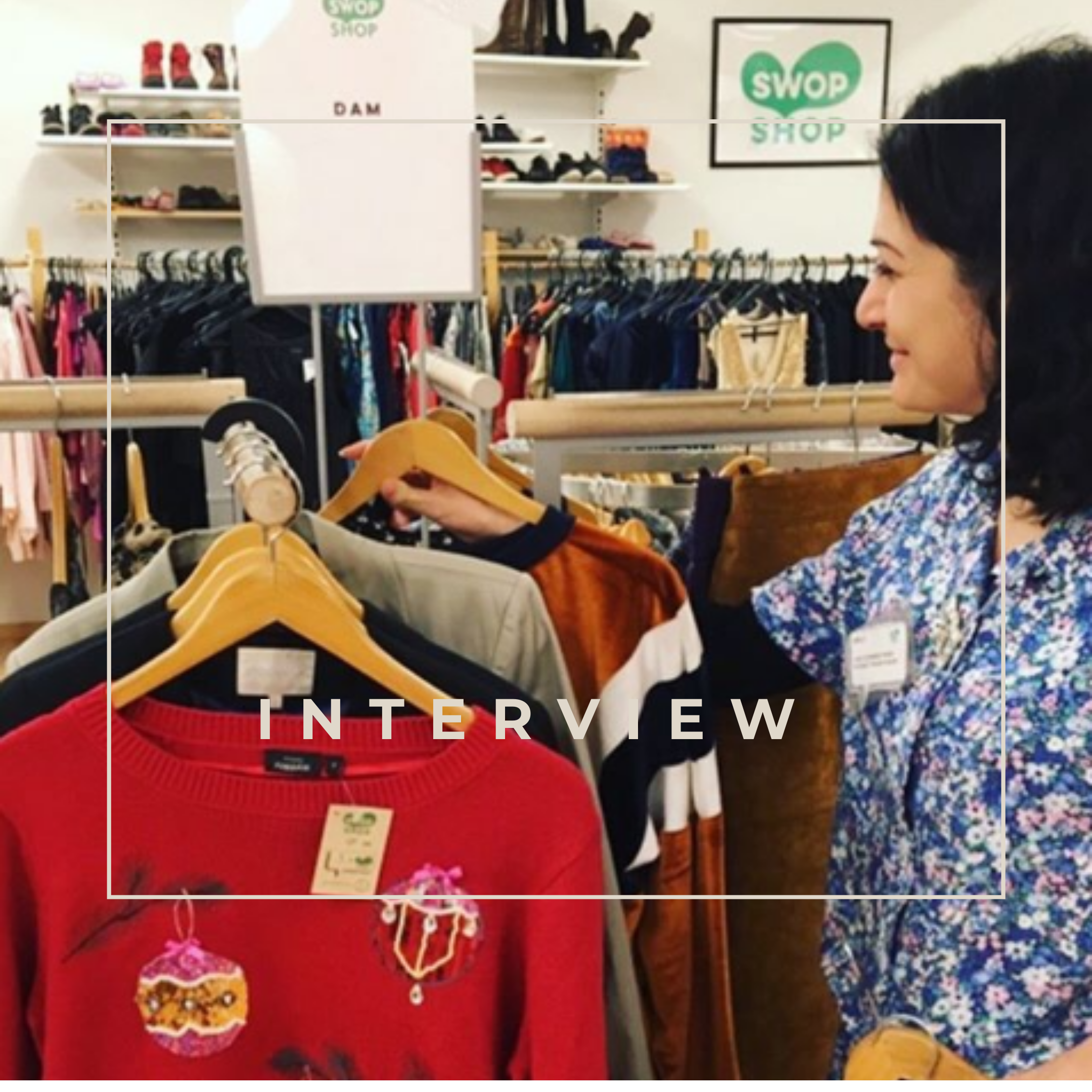#YEEinterview: Swop Shop
 Get to know Swop Shop, the first bartering shop in Sweden. Through a system of fictive money – green hearts – you can exchange clothes! How amazing right? With the pandemic of Covid19, this sustainable business came up with even greener ideas such as swopping online and pick up the clothes at the store. Keep reading to find out more about it!
Get to know Swop Shop, the first bartering shop in Sweden. Through a system of fictive money – green hearts – you can exchange clothes! How amazing right? With the pandemic of Covid19, this sustainable business came up with even greener ideas such as swopping online and pick up the clothes at the store. Keep reading to find out more about it!
 Who is Jane Olsson? Can you tell us a bit about yourself?
Who is Jane Olsson? Can you tell us a bit about yourself?
I’m Jane Olsson, founder of Swop Shop. I worked abroad in countries and overconsumed clothes before. Then I realized, after watching who is actually paying the price for these items, that it is not sustainable for our planet nor for people, so I wanted to become a role model instead and started Swop Shop, the first bartering shop in Sweden. I was born and raised in Malmö, Sweden.
How did you come up with the idea of the Swop Shop? And how does it work?
I worked and lived for a long time in countries which manufacture the clothes we buy here, and saw the conditions for the persons working with it. When I came home, I had a wardrobe full of clothes I didn’t need. I tried the usual ways of second-hand selling and buying, but then got the idea of a bartering shop where you can shop and exchange your wardrobe in an environmentally sustainable way.
Swop Shop works with a system of fictive money, green hearts, where a heart corresponds to 20 Swedish kronor (the Swedish currency). The customer gets a number of green hearts corresponding to the value of the brought clothes, pays a 25 % fee of the same value and is then free to shop for all the hearts, at the same occasion or at a later time.
The value of the clothes is estimated regarding their quality and condition.
This model encourages the customer not only to buy second hand, but also to take good care of their clothes to keep their value. It is also good for Swop Shop: the customers keep coming back!
Which is the biggest challenge you have faced (or you are facing) since setting up this sustainable business?
Biggest challenge in the Swedish society is to be innovative. The government has a hard time to be open minded but during my 7 years it seems as though they have become better at it. Also the custumer can be scared of new ideas…
What kind of reactions/feedback has the Swop Shop received?
 Swop Shop has received awards in 2015 (Blåslampan by the magazine for Swedish Consumers Råd och Rön, as well as “Environmental inspirer of the month” by Sysav) and a scholarship to develop the online shop.
Swop Shop has received awards in 2015 (Blåslampan by the magazine for Swedish Consumers Råd och Rön, as well as “Environmental inspirer of the month” by Sysav) and a scholarship to develop the online shop.
In your opinion, which role does youth play in raising awareness about environmental issues?
They are very important and when it comes to college students, I have done many interviews free of charge. They are the new big CEOs for the upcoming future and can make a difference having my inspirational interview in the back of their mind.
How has Covid-19 affected your sustainable business?
As for many companies, 2020 has been harder with fewer customers and more regulations to follow. Swop Shop has met it with new ideas, more online, set membership fees and a creative thinking to create a safe space for visitors.
Swop Shop has been opened through the pandemic so far. A new way of swopping online was launched: “Swop from Home”, where customers calmly can look through clothes, book them and come and pick already packed clothes when the shop is emptier. They can look through the items before paying with their green hearts.
The children´s flea market housed at Swop Shop, by Swop Shops business partner Malmö Cityloppis, also follows a new model, where sellers and buyers don’t meet. The sellers unpack their marked children’s items on a Friday, start of selling is on the following Saturday, where the first part of the day is time booked in order to prevent too many customers in the shop at the same time. The flea market is then open in the shop the next coming week, before it starts over again.
Swop Shop has also recycled their conference room into a private fitting room filled with exclusive items the booking customer can have for an hour, for a bit of luxury time.
When customers swop items online, is that at the city level or at the national level? Is the swopping based on customers’ proximity? If that is not the case, how are CO2 emissions due to transports taken into consideration in the sustainability discussion?
It is mostly at the city level, Swop Shop aim to be local. Either the swoppers meet themselves, or sometimes they go through Swop Shop and use it as pick up point.
Would you consider swopping items being a more relevant aspect of circular economy or of sharing economy?
Swop Shop tries to be sharing and circular, even if sharing might apply better. Sharing is maybe more obvious, because you can use Swop Shop as a library (with a membership and a swopping fee). If you want a party dress for a night, for instance, you can buy it at Swop Shop, and then swop it back again if you don’t want to keep it. It will still be much more economically advantageous than buying new.
But Swop Shop is circular as well. Clothes that may not fulfill the quality conditions to be swopped, are not thrown away. They are either sold cheaply or given away, to be recycled (or used). Swop Shop also sells upcycled children’s clothes, made by old clothes. A seamstress can help you with changes and fitting of clothes and you can book and use a sewing machine at Swop Shop, who also has second-hand fabric and sewing accessories for sale.
Looking back at when you started the movement, is there something you would do differently?
 I would have started with a “normal” secondhand shop and waited until the government and society was ready. But now Swop Shop is always going to be the first secondhand bartering shop, so what is done is done.
I would have started with a “normal” secondhand shop and waited until the government and society was ready. But now Swop Shop is always going to be the first secondhand bartering shop, so what is done is done.
What’s next for you and the Swop Shop?
At the moment, the new project is called Swop Room, to be able to deal with more than clothes. This will be a place where the customer can swop almost anything, but it is still under development. I want to build SWOP Rooms because custumers cannot come to us so we will come to the custumer, but to the property they live in. So by building swop rooms and maintaining them for the property owner we can continue to spread the love about swopping.
Which advice would you give to the young people like you who want to be more active in environmental protection?
Think of what you consume, how it has been manufactured and where, is it second hand, is it locally produced? Can you find new creative ways of using what you or someone near you already have? Do you need it? Can someone else use what you do not want anymore? Is the material good for something else?
Most important is to start questioning stuff, WHY!? Why is something cheaper than the other?
That will make the stuff for the companies uncomfortable when they don’t know the answer. When they find out the answer themselves, then they will also start questioning and stop working at companies that doesn’t have the upgraded values that we need to be nicer to one another and the environment. Wellbeing should be the highest focus for everybody to everybody.
Thanks to Jane and the team for taking their time for this interview. The story of Swop Shop reminds us that sharing and circular economy are broad concepts: it’s not only about recycling and reducing waste, but it’s also about challenging the current ownership model of consumption. This initiative also brings evidence of the relevance of innovation and being creative to overcome challenges. Good luck with your next projects!
Don´t forget to follow Swop Shop on social media








 YEE aims to unite environmental youth non-profit organisations in Europe in order to enhance international cooperation, increase knowledge about the climate crisis, raise awareness of environmental problems and to strengthen participation of youth in environmental decision-making.
YEE aims to unite environmental youth non-profit organisations in Europe in order to enhance international cooperation, increase knowledge about the climate crisis, raise awareness of environmental problems and to strengthen participation of youth in environmental decision-making.



Leave a Reply
Want to join the discussion?Feel free to contribute!